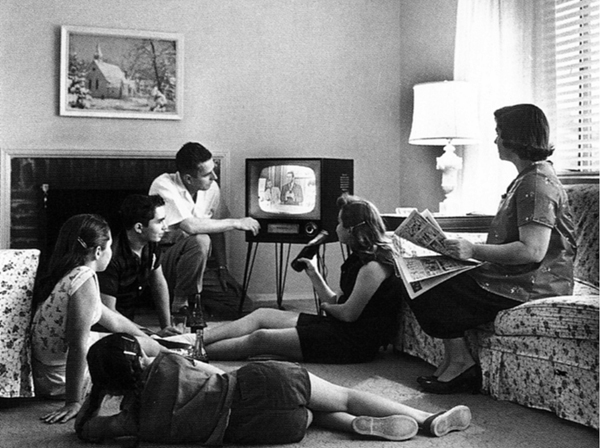The Watch FakeHub Originals Vol. 6 OnlineApple Watch, Android Wear and Samsung's own Gear S series may be the darlings of the smartwatch world, but the Pebble was the first successful one that anyone cared about.
The smartwatch had an e-paper screen and was successfully funded on Kickstarter, which was just hitting its prime, in 2012.
SEE ALSO: Michael Kors smartwatches are exactly what Android Wear needsFounder and CEO Eric Migicovsky asked for $100,000 to build and sell the Pebble. The internet gave him that within two hours of the campaign going live and over $10.2 million by the end of the crowdfunding.
You May Also Like
Even with several versions under its belt -- the Pebble Steel, Pebble Time and Pebble Time Round -- the company decided to turn to Kickstarter once again to fund the more fitness-focused Pebble 2 + Heart Rate smartwatch that I've been wearing for the last week.
Back to basics
The $130 smartwatch harkens back to the original Pebble design with a more toy-like rectangular square case that's thinner and lighter. I think the Pebble Time 2's rounded look is sleeker, but the plastic case and rubber band has its charms, especially now that '90s style is back.
One colleague said the watch looked retro and matched quite nicely with the "low-resolution" pixel software interface on the 1.26-inch (144 x 168) e-paper screen. She said she wouldn't wear it, though.
The black model I've been testing comes with neon yellow sides where the buttons are. The color scheme should immediately tell you who this is aimed at: fitness peeps. It wouldn't look out of place if the Pebble 2 had a Nike swoosh or Adidas logo on it.
 Original image has been replaced. Credit: Mashable
Original image has been replaced. Credit: Mashable  Original image has been replaced. Credit: Mashable
Original image has been replaced. Credit: Mashable The smartwatch comes with a matching 22mm silicone band. The bands are easily interchangeable and I was able to effortlessly swap in a 22mm leather and nylon band which have the quick-release mechanism. They didn't really match so I mostly kept the silicone band on.
The Pebble 2's sporty design isn't just skin deep. It's water-resistant up to 98 feet of water -- good for sweating all over, swimming and use in the rain. I showered with it several times and it was fine.
The e-paper screen is backlit and clearly readable face-on, but the viewing angles could be better. As with all Pebble smartwatches, the e-paper screen affords the Pebble 2 greater power efficiency that other LCD-based smartwatches can't get; battery life is good for up to a week on a single charge as opposed to one to two days.
 Original image has been replaced. Credit: Mashable
Original image has been replaced. Credit: Mashable And speaking of battery, the Pebble 2 charges via a magnetic pin-connector on the back of the device.
It took a little getting used to the buttons -- mainly, remembering the screen's not a touchscreen -- but I was able to fly through the menus after a few hours of usage. The single button on the left side is the power/back button and on the right side there's a select button sandwiched between an up and down button.
Fitness focus
 Original image has been replaced. Credit: Mashable
Original image has been replaced. Credit: Mashable The biggest new addition is the heart rate sensor (in case you somehow missed it in the name), making the smartwatch the first Pebble to have one.
Fitness tracking is something Pebble simply couldn't ignore anymore. Fitbit rules the activity world and the Apple Watch and myriad Android Wear smartwatches all have heart rate sensors as well.
The heart rate sensor is always on and taking your pulse, which it then logs into the Health section of the Pebble app so you can see all the data all in neat little graphs. I actually like the Pebble's graphs more than the default Apple Health app on my iPhone.
 Original image has been replaced. Credit: Mashable
Original image has been replaced. Credit: Mashable  Original image has been replaced. Credit: Mashable
Original image has been replaced. Credit: Mashable The workout section includes three modes that can be activated: walk, run and workout. Each of the modes tracks duration and shows a live reading of your heart rate. In run mode, the watch also keeps tabs on average pace and distance. In walk mode, it tracks all the things the run mode does and count steps.
I don't usually check my heart rate on my Apple Watch, but with the Pebble 2 I was able to easily see my heart rate with just two button presses.
Neat, easy-to-look at app Original image has been replaced. Credit: Mashable
Original image has been replaced. Credit: Mashable  Original image has been replaced. Credit: Mashable
Original image has been replaced. Credit: Mashable It was a strange thing for me to take delight in seeing the spikes and troughs of my heartbeat throughout the day, for an entire week. And I learned one thing: My heart rate is fastest right after lunch, which means I need to maybe calm down right around then.
Testing the Pebble 2's heart rate sensor against my original Apple Watch, the readouts were largely the same with the occasional 1-2 BPM margin of error.
 Original image has been replaced. Credit: Mashable
Original image has been replaced. Credit: Mashable The Pebble 2 also tracks your sleep data. When I first got the smartwatch, the software was on version 4.0 and the for some reason the during the first two days it failed to log any sleep data, as if I didn't sleep at all. After updating to software 4.1, the sleep data worked better. There's still a delay of around 10 minutes for the smartwatch to detect that you've woken up before it stops logging sleep data and transmits that information to the app.
Your fitness data is all quickly accessible from the smartwatch as well. Pressing the up button from the watch face screen brings up a workout summary. Press up once more and you'll see your current heart rate (if you don't have the Heart Beat watch face). And pressing once more from the heart rate screen shows charts for your sleeping data.
Pebble evolved
 Original image has been replaced. Credit: Mashable
Original image has been replaced. Credit: Mashable The Pebble 2 builds on the foundation that the Pebble smartwatches before it set. Adding a heart rate sensor and the fitness and sleep-tracking makes it far more competitive with the $150 Fitbit Charge 2, which has the same features.
Deciding on the $20 difference between the Pebble 2 and Fitbit Charge 2 really depends on what your needs are. The Charge 2 can automatically detect when you're working out and start tracking whereas the Pebble 2 can't. Both wearables show you notifications from your smartphone, but the Pebble 2 is the only non-Apple Watch wearable that lets you send text and voice replies for messages (for select regions and carriers) and replies for emails on iOS; dictating replies worked really well, but it's still basically in beta. The Pebble 2 can also control your music with playback controls.
For a non-serious fitness guy like me, I prefer the Pebble over the Charge 2. It's a smartwatch first with fitness features second. You could get a more smartwatch-like experience with Fitbit's Blaze and Surge, but you'd also have to pay up between $70 and $120 more.
The Pebble 2 won't be replacing my Apple Watch, but if you're in the market for a more affordable smartwatch with a heart rate sensor, notifications, music controls and compatibility with iOS and Android, it's a solid wearable.
Pebble 2 + Heart Rate
The Good
One week battery life
Easy to read e-paper screen
Built-in heart rate sensor
Water-resistant
Integrates with Apple Health app
The Bad
Plasticky design
No auto-activity detection
The Bottom Line
While the Pebble 2 doesn't offer the most comprehensive fitness tracking in a smartwatch, the heart rate sensor makes it a great value at $130.
Topics Fitness Trackers Reviews Smartwatches Mashable Choice








